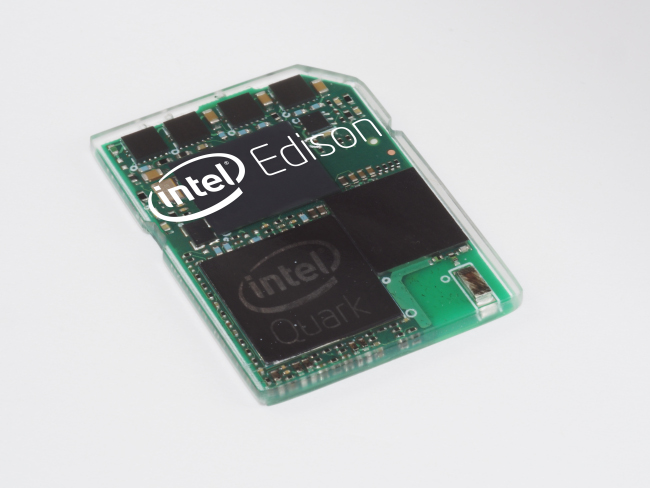Brian Krzanich, CEO of Intel
Intel CEO Brian Krzanich unveiled at CES last night the chip giant’s massive gamble on wearable devices and debuted a new Quark technology called Edison – a 22nm dual core PC the size of an SD card.
Krzanich launched a global innovation call last night with the ‘Make it Wearable’ campaign aimed at accelerating innovation across wearable devices, as well as enabling the maker’s revolution of smart devices spearheaded by inventors across the world.
Krzanich announced major partnerships with New York luxury retailer Barneys, as well as the Council of Fashion Designers of America and design house Opening Ceremony to bring smart wearable technology to market.
The new Intel Edison device is a Quark-based technology housed in an SD card form factor with built-in wireless capabilities and support for multiple operating systems.
The technology will become available during the summer for product designers to integrate into new inventions and wearable devices.
In recent months, a 70-strong team of Intel engineers in Ireland brought out the Intel Galileo dev board, the first product from the Intel Quark technology family of low-power, small-core products.
The Quark technology underpinning both the Edison and the Galileo dev board was designed and developed in Ireland, where Intel employs close to 4,000 people at fabrication facilities in Leixlip, Co Kildare.
Cornering the wearable revolution

At CES, Krzanich cited a number of new devices coming on stream, including smart earbuds that provide biometric and fitness capabilities, a smart headset that is always ready to engage and can integrate with existing personal assistant technologies to make the consumer experience more intuitive, and a smart wireless charging bowl.
“Wearables are not everywhere today because they aren’t yet solving real problems and they aren’t yet integrated with our lifestyles,” said Krzanich.
“We’re focused on addressing this engineering innovation challenge. Our goal is, if something computes and connects, it does it best with Intel inside.”
Intel Security
As well as the emphasis on the wearable, Krzanich also revealed McAfee will be rebranded to Intel Security, a new brand that will be used to identify all Intel security products and services.
“The complexity of keeping digital identities safe grows as mobile applications and devices become a more important part of our daily lives,” Krzanich said.
“Intel’s intent is to intensify our efforts dedicated to making the digital world more secure, and staying ahead of threats to private information on mobile and wearable devices.”
He also stated that Intel is the world’s first microprocessor company to support devices that combine Windows and Android operating systems on a single device.
Conflict-free
Krzanich also addressed critical issues overshadowing the tech industry in terms of the usage of materials from conflict zones like the Democratic Republic of the Congo, and said a milestone had been reached in that the minerals used in Intel chips were “conflict free.”
“Two years ago, I told several colleagues that we needed a hard goal, a commitment to reasonably conclude that the metals used in our microprocessors are conflict-free,” Krzanich said.
“We felt an obligation to implement changes in our supply chain to ensure that our business and our products were not inadvertently funding human atrocities in the Democratic Republic of the Congo. Even though we have reached this milestone, it is just a start.
“We will continue our audits and resolve issues that are found.”